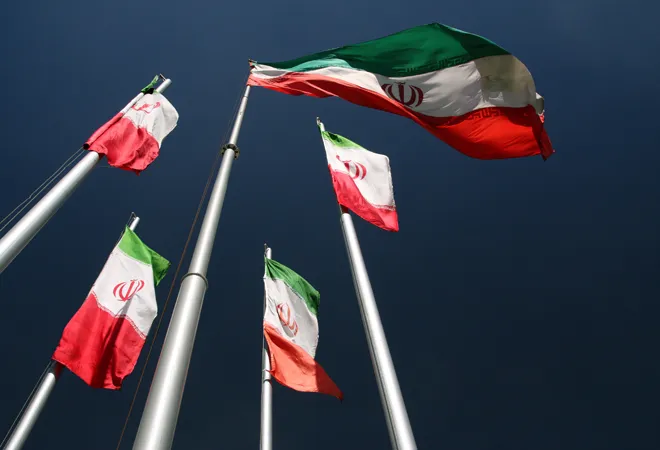As pressure mounts on India to take a re-look at its energy ties with Iran, the debate has taken a predictable turn, one which assesses India-Iran relations through the prism of the US. Iran’s deputy foreign minister Seyed Abbas Araghchi, one of the key negotiators of the Joint Comprehensive Plan of Action (JCPOA), was in Delhi recently as was a US team, led by assistant secretary for terrorist financing Marshall Billingslea.
India has been steadfast in its opposition to the collapse of the JCPOA and is working with Europe and China to salvage the deal. But there are indications that the practical problems in implementing the terms of the deal after the US withdrawal are becoming insurmountable. New Delhi has approved a proposal from Iranian private lender Bank Pasargad to open a branch in Mumbai as it is exploring the possibility of reviving the rupee-rial arrangement it has used in the past for importing oil from Iran. At the same time, India continues to look at the possibility of being exempted from the US sanctions. The US has indicated that waivers could be given if there was significant reduction in oil imports from Iran.
The reality remains, however, that despite all the hype, India’s stakes in Iran are quite limited. Iran is indeed India’s third-largest oil supplier after Iraq and Saudi Arabia, but if push comes to shove, it can be replaced by other sources as the volume is manageable. The larger economic relationship is nothing much to write about, especially when compared to burgeoning trade ties with the Arab Gulf states.
Given this, suggestions by Iranian officials that India could lose “privileges” and revert back to dollar-denominated trade could have been avoided. Though it was later clarified that Iran will “do its best to ensure security of oil supply to India through offering various flexibility measures, which facilitates our bilateral trade in particular Indian export to Iran”, there would be many in India who would wonder why India should bother much about Iranian oil if Tehran continues to threaten New Delhi about certain nominal “privileges”.
New Delhi certainly remains keen on the Chabahar Port and has spent significant diplomatic and political capital on the project. India plans to operate two berths in Chabahar Port Phase-I with a capital investment of $85 million and an annual revenue expenditure of $23 million on a 10-year lease. This will establish a transit and transport corridor using the port as one of the regional hubs for sea transportation in Iran. This is in addition to the multi-modal transport of goods and passengers from India to Central Asia and vice versa. The port is expected to be operational by the end of 2018, with New Delhi committed to developing a free trade area around the port, and finally completing the loop with a $1.6 billion railway line to Zahedan.
Even on this issue, the Iranian approach has been quite befuddling. It has not only suggested that China would be part of the Chabahar project, but has also dangled the possibility of Pakistan joining the project at some future date. In theory, Sino-Indian cooperation or a wider regional cooperative framework would be an excellent idea. Prime Minister Narendra Modi and Chinese President Xi Jinping have talked of a joint project in Afghanistan and Chabahar could be one such endeavour in Iran. But to talk of India’s two main adversaries, while asking India to continue to invest in the project certainly won’t make it very enticing to New Delhi. Moreover, as has been underlined by former foreign secretary S. Jaishankar, it was Iran which was responsible for causing delays in the execution of the Chabahar project.
On Afghanistan and regional security, there are growing divergences between India and Iran. Much like the Taliban, Iran wants to see foreign forces leave. Tehran has been providing military support to the Taliban in Afghanistan for some time now, but this engagement has reached new heights more recently. Recent reports suggest that hundreds of Taliban fighters are being trained by special forces at Iran’s military academies as part of a significant escalation of support for the insurgents. Iran has also reportedly sent Afghans to fight for its ally, President Bashar al-Assad, in Syria. US President Donald Trump’s withdrawal from the Iran nuclear deal further incentivises Iran to enhance its support to the Taliban.
Emboldened by their experience in Syria, Iran and Russia are also working closely in Afghanistan to challenge the US and, this primarily means, supporting the Taliban with greater vigour. Recently, the intelligence agencies of Russia, China, Iran and Pakistan came together in Islamabad to discuss measures against the threat of the Islamic State (IS) militants in Afghanistan. It is interesting to note that neither Afghanistan nor India were part of this discussion. If the idea was to think of “coordinated steps to prevent the trickling of IS terrorists from Syria and Iraq to Afghanistan from where they would pose risks for neighbouring countries”, as suggested by the director of the Foreign Intelligence Service, Sergei Naryshkin, then the absence of Afghanistan was indeed curious.
The Indian strategic community should resist the temptation of making this debate about India resisting or buckling under American pressure. As a self-confident rising power, this debate should essentially be about Indian strategic priorities. If India has to move beyond symbolism in its ties with Iran, Iran has to do the same. Challenging Indian vital interests even as it asks for New Delhi’s help is surely not the best way forward.
This commentary originally appeared in Livemint
The views expressed above belong to the author(s). ORF research and analyses now available on Telegram! Click here to access our curated content — blogs, longforms and interviews.

